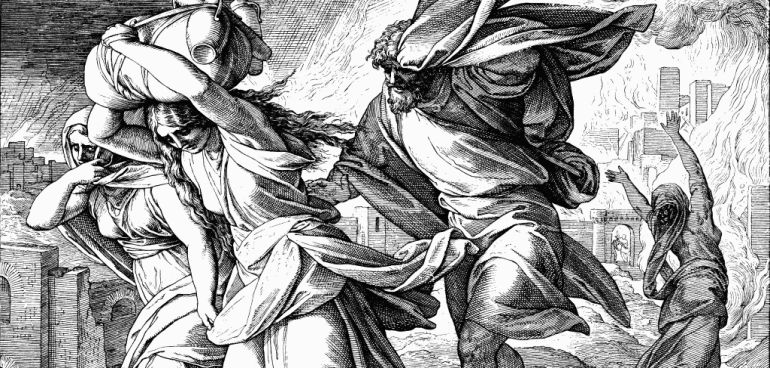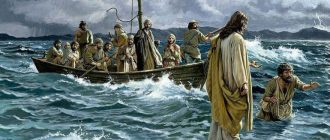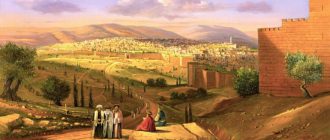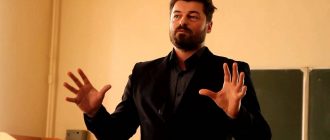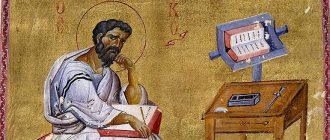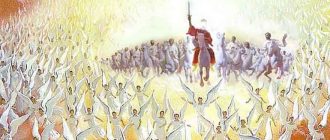This ancient settlement, 14 kilometres northeast of the Dead Sea, dates from the Chalcolithic period (around 4300-3600 BC) but its heyday came somewhat later, in the Bronze Age.
Asteroid?
«One day around 1650 BC, the inhabitants of what is now called Tell el-Hammam were going about their daily business, unaware that an icy space rock was hurtling towards them at 61,000 km/h.
The city at that time had more inhabitants by an order of magnitude than Jerusalem and was five times the size of Jericho.
The rock exploded in the atmosphere as a huge fireball about four kilometres above the ground. The explosion was about 1000 times more powerful than the atomic bomb in Hiroshima. The shocked townspeople who saw the explosion were instantly blinded. Temperatures quickly rose above 2000 °C. Clothing and wood burned first, then swords, spears, raw bricks and pottery began to melt. Almost immediately the city caught fire.
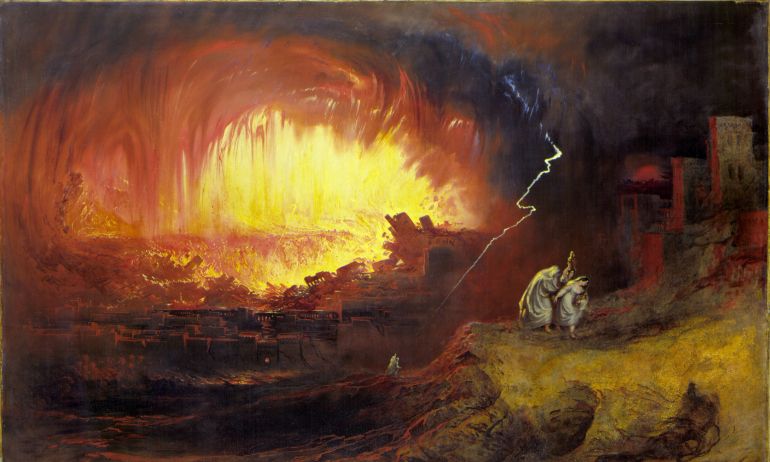
Within seconds, a powerful shockwave hit the city. Moving at about 1200 km/h, it was more powerful than the worst tornado ever recorded. Deadly winds swept through the city, demolishing all the buildings. They tore off the top 12 metres of a four-storey palace and tossed the debris into a neighbouring valley. None of the 8,000 people or any animals in the city survived — their bodies were torn apart and their bones split into small fragments.
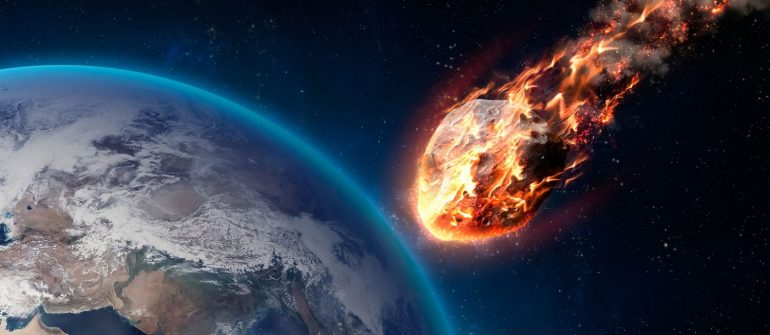
About a minute later, 22 km west of Tall el-Hammam, the wind from the blast hit the biblical city of Jericho, whose walls collapsed and the city burned to the ground.
The only explanation for this destruction of the city could be an asteroid.
The explosion caused the toxic salty water of the Dead Sea to evaporate or spill out all over the valley. Without crops, no one could have lived in the valley for the next 600 years, until minimal rainfall in this desert climate washed the salt from the fields.
«All the observations in the Book of Genesis are consistent with a cosmic explosion in the air,» says James Kennett, professor emeritus of earth sciences at the University of California, Santa Barbara, «but there is no scientific evidence that this particular ruined city is really the Sodom of the Old Testament.
Key points in the description of the cataclysm
3650 years ago there was a major Bronze Age city in the south of the Levant near the Dead Sea. The trouble that befell the city was of unearthly origin (cf. Job 5.6), i.e. it was not destroyed by an earthquake or enemy attack.
An asteroid exploded in the atmosphere above the Dead Sea. The light flare caused the inhabitants of the settlement to go blind at first and then die instantly.
Extremely high temperatures, very high pressure and abnormally high salt concentrations were all indicative of a cosmic cataclysm.
More than 100 neighbouring settlements in the lower Jordan Valley were abandoned and remained uninhabited for the next 300-600 years. The population of the region was reduced from tens of thousands to a few hundred nomads.
Nothing could grow on these formerly fertile lands, forcing people to leave these places.
Those who lived in the distance also suffered retinal burns and went blind. Others, on the other hand, contemplated with horror the fiery glow over a large city, and later, charred and melted materials in the lifeless desert.
Observing later ceramic shards with melted surfaces; bubbling fragments of brick, as well as melted roof tiles, the nomads might have wondered what had happened here and for what reason.
A catastrophe of this magnitude boggled people’s imagination; the memory of the cities’ demise was eventually transformed into myths of divine retribution against the inhabitants of the region.
Myth as a means of politics
The account of the destruction of Sodom is not a reportage from the scene, but rather a philosophy of history of the ancient Jews.
The people of antiquity were characterised by an archaic form of thinking about reality. The mythological type of thinking presupposed an intervention of gods and spirits in earthly events.
The authors of the Bible never described natural events as autonomous processes — they were controlled by Yahweh. Here are characteristic examples. The biblical God:
- extends the night (Ps 103.20);
- sends rain (Job 5.10, Matthew 5.45);
- makes ice (Job 37.10);
- clothes the flowers (Matthew 6.28);
- grows grass (Ps 103.14);
- touches mountains and they smoke (Ps 103.32);
- feeds the birds (Matthew 6.26);
- gives food to beasts (Ps 103.27);
- commands the sun to rise (Matthew 5.45);
- causes an earthquake (Ps 103.32);
- disperses the waters of the Red Sea by the wind (Ex 14.21);
- He commands water to bring forth fish, earth to bring forth herbs and beasts (Gen 1.12,20,24).
If stones fall from heaven, it is Yahweh himself who throws them:
as they fled before Israel and were on the descent of Beth Horon, that the LORD cast down large hailstones from heaven on them as far as Azekah, and they died. There were more who died from the hailstones than the children of Israel killed with the sword (Joshua 10:11 NKJV).
In this case God is depicted as a participant in the battle. He throws stones from heaven to destroy the enemies of the nation of Israel.
Accordingly, readers of Genesis understood that the cities around Sodom could not have perished by accident. The falling fire from heaven spoke to them of Yahweh’s intense anger at the wickedness of the people.
The biblical account contained an important admonition for the Jews: for their cruelty and perfidy the neighbouring settlements were to be utterly destroyed.
On the other hand, an important purpose of the account of the destruction of Sodom was to explain the origins of the peoples who inhabited Canaan and Transjordan — this too is an important function of myth.
In Genesis, the ancestors of Moab and Ammon are put in a most unfavourable light. I believe that here we see an example of politically motivated black PR created «retroactively» by the author of Genesis.
Israel Finkelstein, dean of the archaeology department at Tel Aviv University, believes that «the tales of the patriarchs clearly reflect the relationship of Israel and Judah with their Eastern neighbours. During the eighth and seventh centuries BC their contacts with the kingdoms of Ammon and Moab were often hostile; Israel actually dominated Moab in the early ninth century BC. It is therefore significant — and it is entertaining — how the eastern neighbours were humiliated in the patriarchal lineage.
Genesis 19:30-38 informs us that these nations were born of an incestuous union. There was not a Jew in the seventh century B.C. who, looking across the Dead Sea towards a rival kingdom, could have restrained a contemptuous smile when recalling the history of such a dubious reputation of their ancestors.»
Contempt was also shown by the Jews towards the dead inhabitants of Sodom.
The prophet Ezekiel mentions it in his book,
«For your sister Sodom was not a byword in your mouth in the days of your pride, before your wickedness was uncovered» (Ezekiel 16.56-57).
The authors of the Pentateuch and the prophets were convinced that calamities did not just come.
Like Job’s friends, they held the conviction that disaster was always caused by human sin. The general rule of the Old Testament was that those who obeyed God would enjoy prosperity and longevity, but sinners would be cursed by the Lord, suffering sickness and death would befall them.
«The fire of God fell from heaven and burned up the sheep and the servants» (Job 1.16).
Why?
Obviously Job’s sins were the cause, perhaps secret sins.
Job, in his suffering, was given a new vision of earthly life — he noticed that often the law of divine justice was violated: the righteous suffered and the sinners prospered (Job 9. 22-24; 12.6).
But for the author of Genesis such a version simply did not exist: catastrophes are always the consequences of sin. And the more terrible the calamity, the more terrible were the sins of men before Yahweh.
The Lord said: «Because the outcry against Sodom and Gomorrah is great, and because their sin is very grave» (Genesis 18.20).
The writer of Genesis believed that the catastrophe was due to human error.
The location of the «cities of the valley» on the eastern shore of the Dead Sea is uncertain. Their association with Sigor (Zoara on the 6th century map from Medeve) and the tar pits ‘in the valley of Siddim’ (Genesis 14.10) points to the southern end of the Dead Sea. The argument for locating them in the north of the Dead Sea is based on the reference to «the vicinity of Jordan» in Genesis. 13.10-12.
During the Early Bronze Age there were towns with a fairly high population level in the plain southeast of the Dead Sea (from 3300 to 2100 BC): Babed Dhra, Safi, Numeria, Feifa and Hanazir. Some identify these sites with the five cities of the valley (Genesis 14:2), but it is unlikely that any of these ruins are Sodom or Gomorrah. It is more likely that they are the ruins of nearby cities (perhaps Sigoric was one of them). Archaeologists date the destruction of these cities to around 2530 BC, much earlier than Abraham’s lifetime, though the Bible records that Abraham was in contact with the king of Sodom (Genesis 14:21).
The southeastern direction is also indicated by some texts in the Bible:
- «your younger sister, who dwells to the south of you, is Sodom and her daughters» (Ezek 16.46);
- «And the border of the Canaanites was from Sidon as you go toward Gerar, as far as Gaza; then as you go toward Sodom, Gomorrah, Admah, and Zeboiim, as far as Lasha» (Gen 10.19);
- «saw all the plain of Jordan, that it was well watered everywhere (before the Lord destroyed Sodom and Gomorrah) like the garden of the Lord, like the land of Egypt as you go toward Zoar» (Genesis 13.10). Zoar is located on the southern shore of the Dead Sea
- «please let me escape there (is it not a little one?) and my soul shall live… Therefore the name of the city was called Zoar» (Genesis 19.20-22).
Thus, the biblical authors believed that the sinful cities were located in the plain southeast of the Dead Sea. Recall that the city-state destroyed by the asteroid lay to the northeast of the Dead Sea near Jericho.
The biblical description of the cataclysm
«Then the Lord rained brimstone and fire on Sodom and Gomorrah, from the Lord out of the heavens… and behold, the smoke of the land which went up like the smoke of a furnace» (Genesis 19.24-28).
There are many places in the Bible where the destruction of Sodom is presented as a pattern of total destruction:
- «The punishment of the iniquity of the daughter of my people Is greater than the punishment of the sin of Sodom, Which was overthrown in a moment, With no hand to help her!» (Lamentations 4.6)
- “Surely Moab shall be like Sodom, And the people of Ammon like Gomorrah — Overrun with weeds and saltpits, And a perpetual desolation» (Zephaniah 2:9)
- «‘The whole land is brimstone, salt, and burning; it is not sown, nor does it bear, nor does any grass grow there, like the overthrow of Sodom and Gomorrah, Admah, and Zeboiim, which the Lord overthrew in His anger and His wrath» (Deuteronomy 29.23)
- «“I overthrew some of you, As God overthrew Sodom and Gomorrah, And you were like a firebrand plucked from the burning» (Amos 4.11);
- «Unless the Lord of hosts Had left to us a very small remnant, We would have become like Sodom, We would have been made like Gomorrah» (Is 1.9).
- «And Babylon… Will be as when God overthrew Sodom and Gomorrah» (Isaiah 13.19);
- «As in the overthrow of Sodom and Gomorrah And their neighbors,” says the Lord, “No one shall remain there, Nor shall a son of man dwell in it» (Jeremiah 49:18).
So, the biblical authors regarded the destruction of Sodom and the surrounding cities as a supernatural event, which happened very quickly and without human intervention. They imagined that burning sulphur had fallen from heaven, as a result of which all the people and plants died instantly. For centuries the region became «a salt pit and a desert», where not even grass grew.
All the biblical authors stress that God punished the cities for their wickedness:
- «But the men of Sodom were exceedingly wicked and sinful against the Lord» (Genesis 13.13).
- «The look on their countenance witnesses against them, And they declare their sin as Sodom» (Isaiah 3.9);
- «For their vine is of the vine of Sodom And of the fields of Gomorrah; Their grapes are grapes of gall, Their clusters are bitter» (Deuteronomy 32.32).
Of course, these vague formulations need specificity.
What were the sins of these cities, we will consider in Part 2 of our review.
Literature
- A Tunguska sized airburst destroyed Tall el-Hammam a Middle Bronze Age city in the Jordan Valley near the Dead Sea. URL: https://www.nature.com/articles/s41598-021-97778-3
- Finkelstein Israel, Silberman Neil Asher. Finkelstein, I., Silberman, NA., The Bible Unearthed: Archaeology’s New Vision of Ancient Israel and the Origin of Its Sacred Texts. Free Press, 2001. 385 pp
Aleksandr Usatov
ausatov@protonmail.com
